Welcome to University of Washington Sites. This is your first post. Edit or delete it, then start writing!
Author Archives: gonzalsa
GPR: A Ground Breaking Experience!
It was a cold Monday morning when Jessica Curteman, the senior archaeologist at the Grand Ronde Historical Preservation Office, entered the lab with a Ground Penetrating Radar (GPR) device. I had read about the use of radar waves [used to survey archaeological sites] in the past, although when seeing the machine in real life I couldn’t help but think about the way in which it strongly resembled a baby stroller. Thankfully, I soon discovered that I would have the opportunity to work with the GPR team, allowing me to spend time learning about this some-what mysterious device.
In the beginning, I was curious how GPR actually grants archaeologists the ability to locate, identify, and map features under the ground surface. With the help of Jessica, I began to understand the complex way in which the GPR device is able to greatly assist in surveying a site. From what I gather, the surface antenna attached to the bottom of the baby stroller does most of the work, as it is the producer of the radar energy. The energy produced sends out multiple signals that are subsequently reflected by anomalies within the soil.
Although we have not yet preformed a full analysis of our findings, I was lucky enough to study the GPR display screen as my teammate Markee pushed the device. Markee explained that this was one of their favorite surveying techniques, as it allowed them to view instant results. I agree with Markee—there is something incredibly rewarding about seeing physical results present themselves in front of you (even if the data need later processing to more fully interpret their meaning).
GPR offers archaeologists the ability to see beneath the surface without disturbing soil, although this technique does not come without cost. The first cost is the literal cost of the baby stroller/GPR device – around $40,000. They definitely don’t sell them at Costco in a bundle of 20. Secondly, it takes dedicated time to complete a GPR grid, this often deters archaeologists from undergoing low impact methods of survey, as they don’t have the time or resources to undergo such in-depth data collection. Finally, there are the ways in which GPR data can be altered and skewed by the world around the surveying team. The GPR is greatly affected by radio waves, meaning that you-and everyone around you – is required to turn off their phones when the ground penetrative radar device is in use (this is harder for some more than others).
You may be shocked to hear that GPR is not the most glamorous form of archaeology- although I have envisioned a final instalment of Indiana Jones where Indy leans over a GPR screen, hands cupped over the screen as he tries to decipher whether or not the file saved for the 50th time. Like many minimally invasive forms of survey, GPR can be a time consuming act; often those final lines of the grid are as tiresome as they are satisfying. As your team pushes that baby stroller/GPR through an open field, a rocky forest or, as Jessica put it “hundreds of ant hills”, remember that you are pushing towards a future in archaeology that preserves rather than disturbs.

(Fiona Pushing the GPR- photo by me)
Seed Collecting With the Natural Resource Department
Learning about seed collecting with the CTGR Natural Resources Department Nursery manager, Jeremy Ojua.
A New Way of Thinking About Things
The first time I was introduced to thinking about the things archaeologist find, the things we see in museum exhibits, even the things we buy and sell in thrift stores and auctions differently was during the FIMA group tour of the collections housed at the Confederate Tribes of Grande Ronde’s collections facility at Chachalu Historic Preservation Offices. Instead of referring to the items stored neatly on the collection shelves as “artifacts” or “objects” the Cultural Collection Coordinator Sybil Edwards explained that those things are “belongings”. What an interesting concept to consider a slight change in wording could have such a profound effect on the way we think about the things archaeologists dig up.
Belonging has a much more personal and deeper connotation than merely labeling everything with the scientific coldness inherent in “artifact.” Belonging implies that the things archaeologist find, or those items that are donated to the collections, are connected to a person that there is a narrative and a story that the item has to tell. A belonging has had a life of its own and formed connections with people and places.
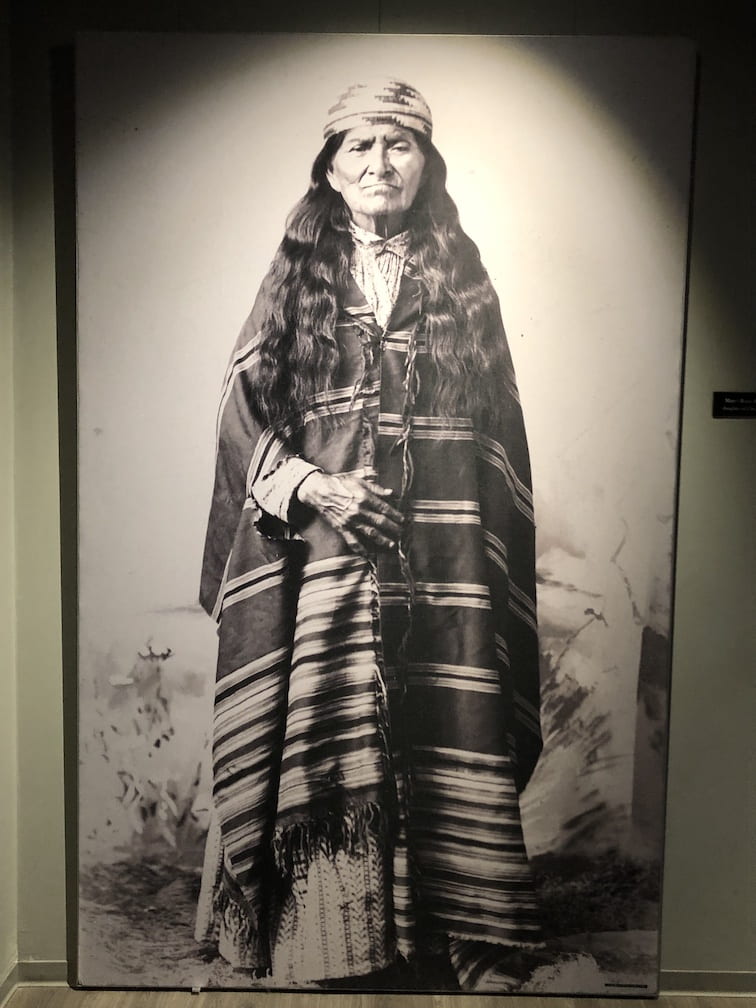
Chachalu Museum and Cultural Center
The traditional questions that researchers ask of material culture are questions such as “How was it made?” “What was it used for?” “What is it made out of?” But, changing the word from artifact to belonging in describing these objects also changes the questions we ask. Instead of asking standard scientific questions associated with an artifact or specimen, “belonging” not only reflects the way the community understands objects, but also helps researchers think of things in a different way. Instead we are more likely to ask more personal questions of a belonging such as what are the stories behind these connections and what can we learn about its journey of belonging? We begin to focus on who. Who did this item belong to? Who were they and what was this item to them?
The Anxious Archaeologist

Horses were one of the highlights of working at our site!
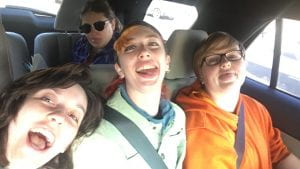
Me and just a few of the amazing people that helped make this experience great no matter what happened.
My experience at the FMIA field school has been full of surprises; meeting wonderful new people, making new friends, and discovering a new way to do archaeology in the Willamette Valley. One surprise that was not as welcome however, was the realization of how much anxiety living at the project would cause me.
In the field of Archaeology, traveling for work is expected as a fact of life. For someone with anxiety, however, this aspect of the job has always worried me. I have tried to deal with my anxiety in the past, but as is common with anxiety, it can be triggered randomly and severely in the most unexpected ways. For me, it was having to live at camp. Fortunately, I was able to bond with the team during the first week, and after attempting to deal with the issue and failing, the staff was kind enough to accommodate me by letting me commute from home to mitigate my now near constant state of anxiety. Though this condition can make individuals, myself included, feel extremely isolated, the FMIA crew has done everything possible to make me feel understood, included and supported and I will be forever grateful.
As I continue into the field of archaeology with this issue, I plan to seek counseling to learn how to control and limit my anxiety, and be able to travel on my own for work in the future. But for now, I will have to make archaeology work for me. This may mean finding work within an hour commute of my town and family, or working more office based jobs, or even putting my dream of archaeology on hold to deal with my anxiety properly. As daunting as this future is, what I want to communicate through this story is that people with anxiety are not alone; in the field of archaeology, and in the world in general. Take care of yourself, and make the world work for you if you have too, and know that it’s alright to take a break to care for yourself. And, always remember to be grateful to those who help you make this possible (Thank you FMIA camp fam!).
Speaking of not being alone, it helped me to know that making the field of archaeology, and academia in general, more accepting of different people is an effort being made from many different angles. Opening up the field to people dealing with everything from anxiety and depression, to more serious mental and physical disabilities, is a relatively new cry being taken up by many social groups, individual archaeologists, and universities around the world. For more testimonies, and examples of archaeologists dealing with anxiety and mental health see: (Digging While Depressed, Mental Health in Archaeology, Excavation) for a helpful guides on helping people with mental health issues in field work see: https://www.heacademy.ac.uk/system/files/Number5_Teaching_and_Learning_Guide_Inclusive_Accessible_Archaeology.pdf
https://www.archaeologists.net/sites/default/files/Disabilitypaper.pdf
The Edible Plant Life of Grand Ronde
Prior to my arrival at Grand Ronde I had a longstanding fascination with plants. One of my pastimes is identifying as many plants as possible anytime I’m outside. While at Grand Ronde I had the opportunity to be introduced to many first foods. Throughout our five weeks, my peers and I were guided through the methodology used to harvest, prepare, and consume these traditional plants at several different locations. The privilege to learn from a multitude of experts during my time at Grand Ronde has left me incredibly inspired to expand on my edible plant knowledge back home in California. I hope to continue to share the knowledge I have gained with friends, family, peers, and the public so we can all strive to develop a better understanding of the plant life around us.
Please enjoy the digital journey through some of the edible plant life of Grand Ronde:
References:
-Book Referenced:
Deur, D. (2014). Pacific Northwest Foraging: 120 wild and flavorful edibles from Alaska blueberries to wild hazelnuts. Portland, OR: Timber Press.
-Link to Purchase: Pacific Northwest Foraging
-Chinuk Wawa Translations:
The Confederated Tribes of Grand Ronde Chinuk Wawa Application
-Free Links to Download:
-Photos Taken and Edited By: Sara Aguilar
-Blackberry Picking Video Taken and Edited By: Leah Bruce
My Life So Far
It has been an amazing 3 weeks here at Grande Ronde. We have learned lots, been on many a field trip and started working on site. This is such an awesome group of people and we all work together well. We have been eating wonderful food cooked by the fabulous Grande Ronde Nutrition Program. You might be interested in what we have been doing for three weeks. Let me tell you.
Our schedule is as follows (with some flexibility). We are in the cars ready for the day by 7:30. Breakfast starts when we arrive at the Historic Preservation Office. Breakfast ends when morning meeting begins. Morning meeting begins around 8:45. This is where we go over the plan for the day. At 9:00 we start our day, whether it is a lesson, a field trip or going to the site. Some of the lessons we have had include colonization and decolonization, native representations, THPO 101, mapping 101,102, and 103, GPS, and digital storytelling.
We have taken several field trips. One field trip was to Salem. We started at Baskett Slough, where we talked about the land. We were told to not see the land as it is today, but to imagine what it would look like in the past, when people managed the land. We then traveled the Union Mission Gospel site. Here we talked about some of the struggles that are involved with urban archaeology. After, we had lunch at Riverfront park.Here we talked about life ways, selective representation and new technologies being used in archaeology. We ended the trip at Chankal. This is a sacred site for the Grande Ronde tribal community.
We did a mini field trip around Grande Ronde. We started at the Natural Resources Department in their gardens where we talked about native plants and first foods. We then went to the Molallah site and talked about the work that had been done there in previous years. We ended at Fort Yamhill where we look at how the Oregon State Parks represented how the fort was used to control/protect the Native Americans in the area.
Our field trip to the coast was super fun. We started at Mt. Hebo, although we were in a cloud, we could still look at all the amazing plants. We then went to Cape Mears to see the Octopus Tree. We ended the day at Tillamook.
At the site we have started to work with the total station to set up the Ground Penetrating Radar grid. We also started the pedestrian survey to find objects on the surface. The GPS team goes behind the pedestrian survey to place the objects on a map. To split up the day we have lunch at 12:00. We work until dinner at 5:00. After dinner we have free time to write in our field notebooks, write our blog posts, create digital stories, play games or read books. We usually go to bed around 10:00 so we can get up and start our day all over again.
These 3 weeks have zoomed by and I am so excited for the next 2 weeks. It will be sad to leave this amazing community, but I will have learned many things and made connections that will help me continue my career.
Archeology at Grand Ronde
As an archeology student at the University of Washington, I’ve learned a lot about how archeological research is usually done. Some old cities in the Middle East will be excavated so far down that you need a ladder to reach the bottom and the excavation will cover a lot of surface as well. Cave sites can be similar, where sections with good surface deposits will be dug, field season after field season adding to the excavated area. The artefacts and belongings are usually removed and placed in a climate-controlled collections room far away from the original site and the land is irrevocably disturbed.
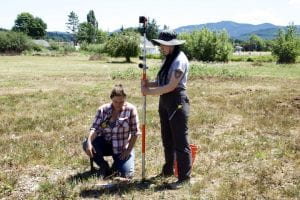
Students using the total station. Image credit to Markee.
Needless to say, I’ve learned that that’s not the Grand Ronde way of doing archeology. We’ve been in the field for a few weeks now and we’ve talked a lot about minimising our impact on the land. We’ve learned about working with developers to work around belongings so that they aren’t damaged or need to be removed, as well as returning soil and items to the ground. Part of why Grand Ronde is able to do this kind of low-impact archaeology is because of the tools invested in, like ground-penetrating radar, which helps you understand what’s underneath the soil. Ground-penetrating radar (GPR) uses radio waves to “see” what’s in the ground, like some boats use sonar to map the ocean floor. Radio waves bounce back to the receiver when they hit something, allowing us to see potential walls, walkways, and objects underneath the soil. We also use pedestrian survey (walking along the ground), Total Station, and GPS mapping to understand what’s on the surface. We map belongings and features, like trees and mounds, with GPS and our GPR units with the Total Station. These maps can then be combined with historical photos to help us identify the areas where we’re most likely to find what we’re looking for.
The Value of My Degree
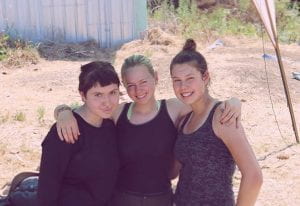
In addition to the many academic opportunities afforded to me through my academic journey, this field of study has also brought me lifelong friends!
My decision to major in anthropology as an undergraduate was a part of a larger vision; one that I had been holding onto since I was 13. In my dreams, being an anthropology student, or more specifically, an archaeologist meant that my life would be filled with meaningful connections and thrilling adventures. What I had not anticipated was the way my family and friends would react to my career choice.
In addition to the many other inquiries I have been presented throughout my educational career, the most commonly asked questions have to do with earning potential or general confusion as to what exactly this field looks like in practice.
Although these kinds of questions were once infuriating, having had the time to develop witty retorts and responses, I’ve grown to love such inquiries. You see, behind all of the misconceptions and Harrison-Ford related fantasies that cloud the true vision of my field, are very real and important skills. The truth of the matter is although my degree may not allow me to afford a super-yacht, I can say that learning to think like an anthropologist has made me a better person.Though this might sound like some kind of line out of a Hallmark card, I truly mean it when I say that my education has enabled me to be better; to work hard, to advocate for others, and to learn how to support those around me in a way that feels uplifting and empowering.
When I first arrived at the University of Washington, I got involved in undergraduate research, working as a part of an archaeology project within the Grand Ronde community. While conducting this research, I have had to become more aware of myself, and begin thinking more critically about my own privilege, but also how I can be a positive presence among those I am working with. This experience has forever changed my heart; I have grown into a person who is open-minded, compassionate, reflective and informed regarding the struggles faced by those living in my own community.
So, when asked about what I plan to do after graduation, how I intend on earning an income, or if I regret taking out loans in order to chase what I have been told is a “pipedream”, I answer honestly, explaining that I’m not quite sure yet. Despite this uncertainty, I can state with confidence that whatever I pursue, I will use my education and training as an anthropologist to be an uplifting force in my profession. After all, it is this training, which has taught me empathy for my neighbors and provided me with a strong sense of what we owe to one another, that has gifted me with my most marketable skills, and so as far as I’m concerned, my education has been absolutely priceless.
About Me: Ashlee
Hi, my name’s Ashlee. I’m an undergraduate in Archeological Sciences at the University of Washington. I’m really excited to spend time outdoors learning and practicing community-focused, low-impact archeology. I’m a big fan of gardening and watching all the insects and birds around me, as well as reading about new things.
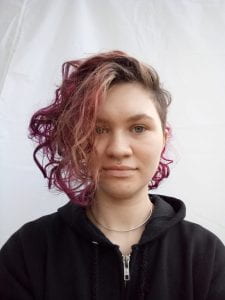
Photo of Ashlee
